Imagine walking into your home and taking a deep breath of air that feels as fresh as a morning breeze. In our daily quest for healthier living, we often overlook the very air we breathe, especially indoors, where pollutants can linger. Whether you are just discovering the joys of nurturing nature or have long considered your green thumb an extension of yourself, you’ll find that certain plants can transform your living space into a sanctuary of clean air.
Research has shown that some houseplants go beyond their aesthetic charm and play a crucial role in purifying the air. These natural air purifiers absorb toxins and release oxygen, effectively turning your home into a haven of health and tranquility. In this article, we will delve into a selection of these remarkable plants, offering insights into their care and the specific benefits they bring to your household environment.
You’ll learn about the best plants that not only thrive indoors but also work tirelessly to cleanse the air around you. From the resilient snake plant to the vibrant peace lily, each plant has unique characteristics that make it a valuable ally in your home. Together, we’ll explore how to integrate these green companions into your living spaces, enhancing both the air you breathe and the ambiance of your home.
Top Air-Purifying Houseplants
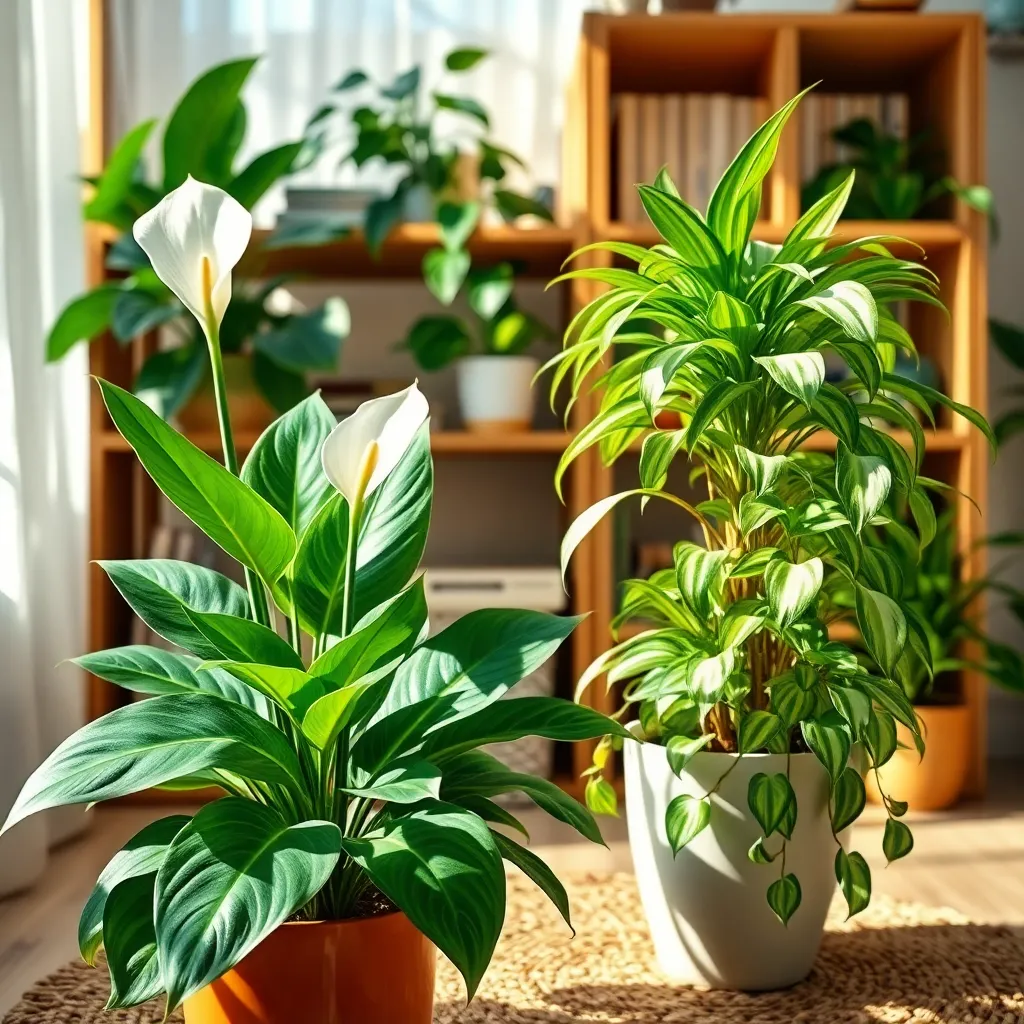
Many houseplants are known for their air-purifying qualities, making them an excellent addition to any home. English Ivy is a top choice for its ability to remove toxins like formaldehyde and is easy to care for with moderate light and weekly watering.
For a touch of elegance, consider the Peace Lily, which thrives in low-light conditions and blooms with beautiful white flowers. Be sure to keep its soil consistently moist, and wipe its leaves regularly to maximize its air-cleaning effect.
Another effective option is the Spider Plant, perfect for beginners due to its robust nature and ability to thrive in indirect sunlight. Water this plant about once a week, allowing the soil to dry out slightly between waterings, and you’ll find it quickly multiplying with baby plants.
Snake Plants, known for their hardy nature, are great for removing toxins like benzene and trichloroethylene from the air. They’re very low maintenance, requiring watering only every couple of weeks and adapting well to a range of light conditions.
Benefits of Indoor Greenery
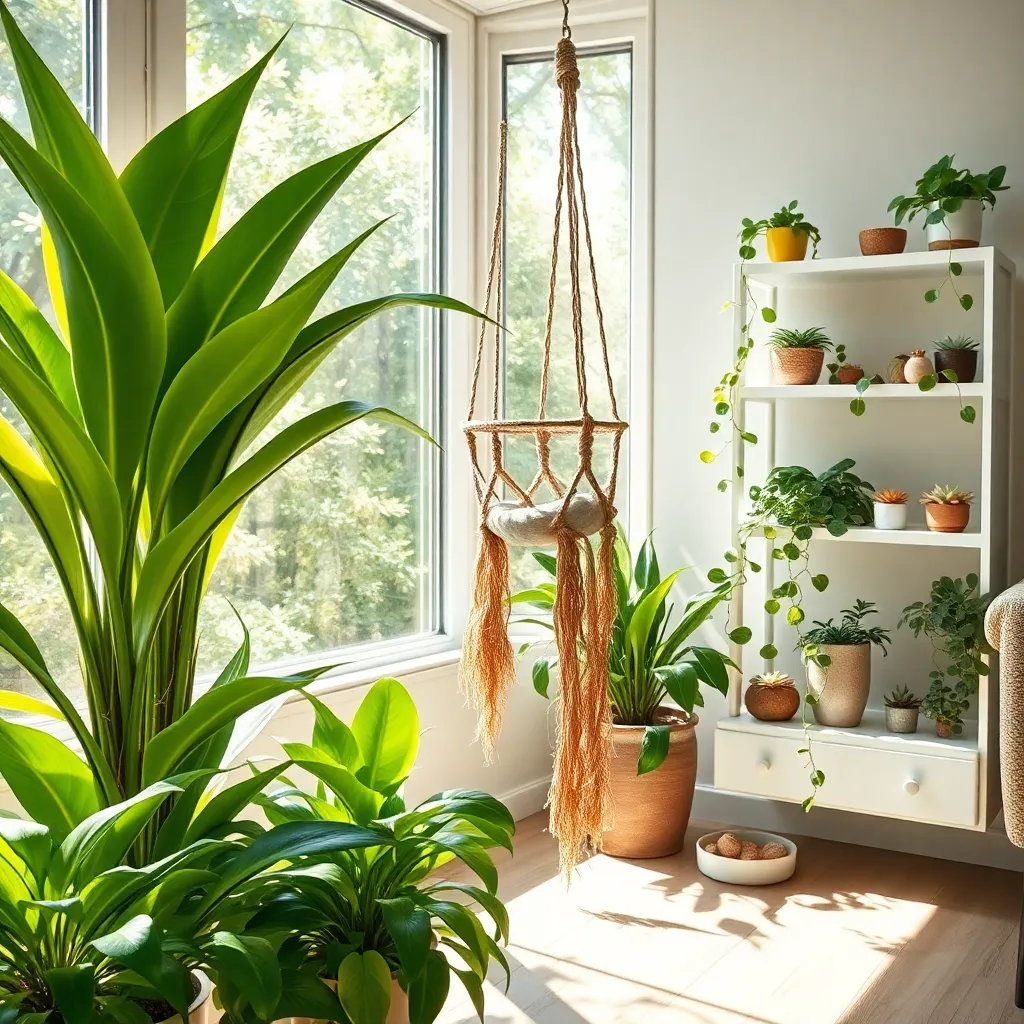
Incorporating indoor greenery in your home offers a multitude of benefits beyond aesthetic appeal. Houseplants are known to improve air quality by removing toxins and releasing oxygen, creating a healthier living environment.
To maximize these benefits, it’s essential to choose the right plants and care for them properly. Some popular options include the spider plant, which thrives in indirect sunlight and requires watering only when the soil is dry to the touch.
Another excellent choice is the peace lily, which is celebrated for its air-purifying qualities. This plant prefers low light and high humidity, making it ideal for bathrooms or kitchens where moisture levels are naturally higher.
For those looking to expand their indoor garden, consider the rubber plant—a hardy option that can tolerate low light and requires infrequent watering. To keep your rubber plant healthy, use a well-draining soil mix and ensure it receives some indirect sunlight throughout the day.
Advanced gardeners might explore the benefits of growing ferns indoors, which are excellent at filtering pollutants. They thrive in rich, well-draining soil and need regular watering to maintain the moisture they crave, along with a location that offers bright, indirect light.
Choosing the Best Plant Varieties
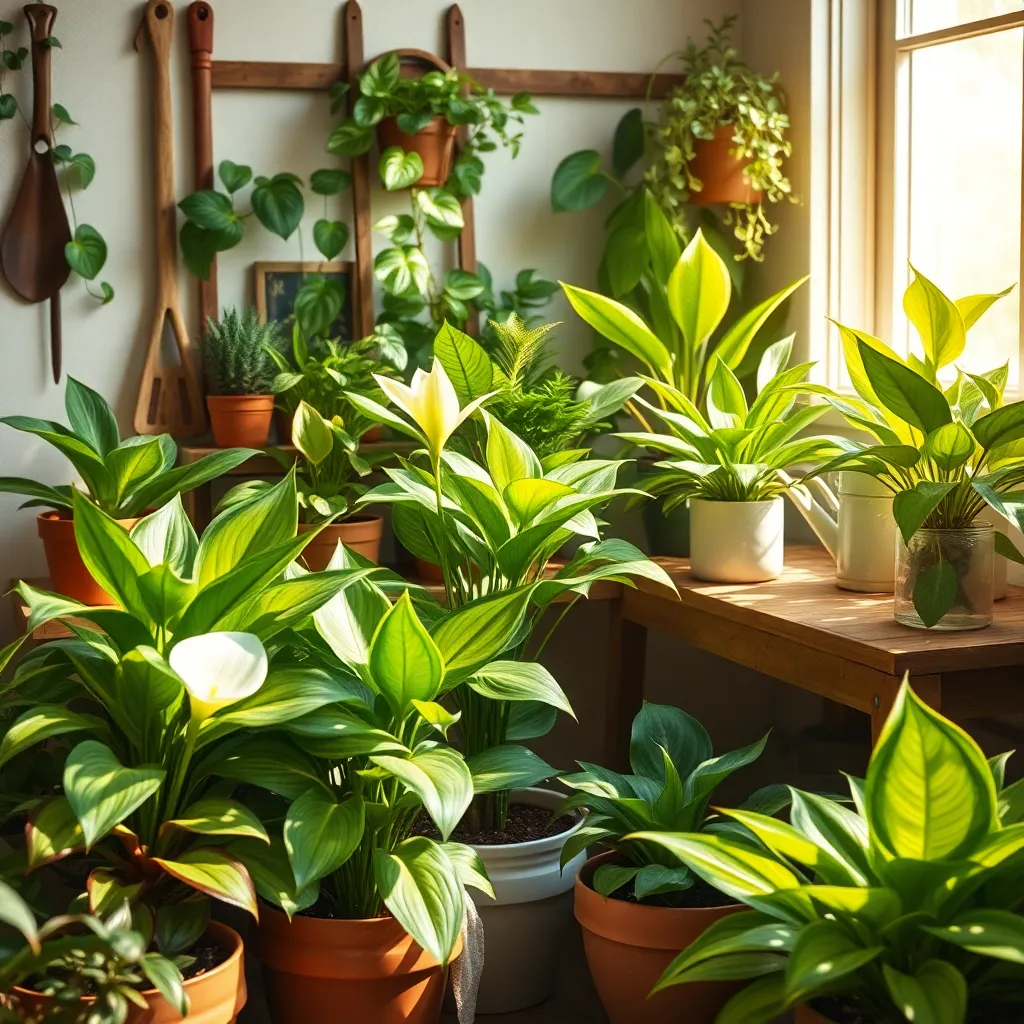
When selecting plant varieties for air purification, it’s essential to consider both their effectiveness and ease of care. Spider plants, peace lilies, and snake plants are excellent choices for beginners due to their hardiness and high air-cleaning capabilities.
Spider plants are particularly forgiving and thrive in indirect sunlight, making them ideal for most indoor environments. Water them thoroughly once a week, allowing the soil to dry out between waterings to prevent root rot.
For those looking to add a touch of floral beauty while purifying the air, peace lilies are a great option. They prefer a shaded spot and require watering when the top inch of soil feels dry, ensuring their leaves remain lush and vibrant.
More experienced gardeners might enjoy the challenge of growing a bamboo palm, which can also significantly improve indoor air quality. These palms flourish in bright, indirect light and need regular watering, keeping the soil consistently moist but not waterlogged.
To enhance air purification, consider using a high-quality potting mix that promotes healthy root development. An all-purpose indoor potting soil enriched with organic matter will support the growth of most air-cleaning plants.
Advanced gardeners might experiment with hydroponics to optimize plant growth and air filtration. This technique requires careful monitoring of nutrient solutions but can result in faster growth and more effective air purification.
Caring for Air-Cleaning Plants
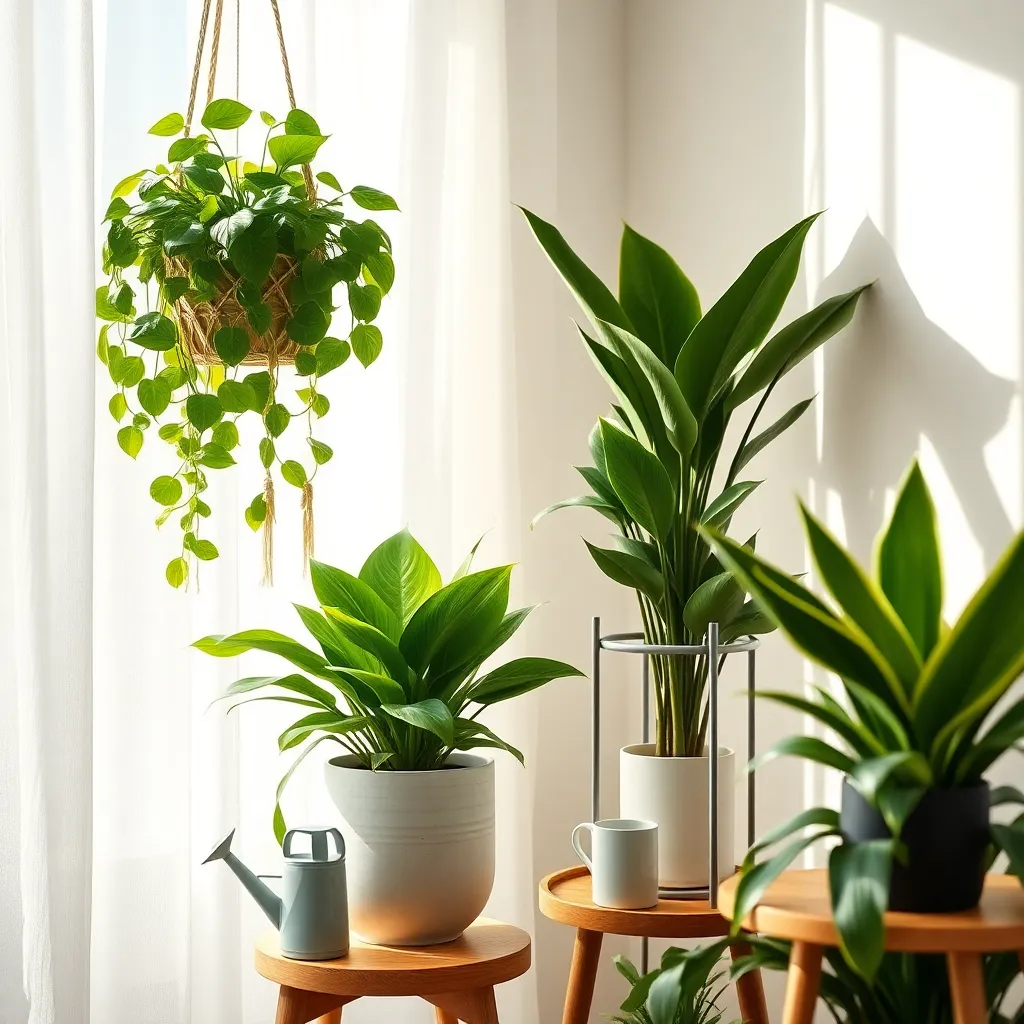
To keep your air-cleaning plants thriving, start with their basic needs. Most of these plants prefer bright, indirect sunlight, so place them near windows that filter light through sheer curtains.
Watering is crucial for healthy growth, but it’s important not to overdo it. Allow the top inch of soil to dry out between waterings to prevent root rot, a common issue with indoor plants.
When it comes to soil, a well-draining potting mix is essential. You can create your own by mixing regular potting soil with perlite or sand, ensuring that excess water is efficiently drained away.
Fertilizing air-cleaning plants is equally important to maintain their vigor. Feed them with a balanced liquid fertilizer every month during the growing season, typically spring and summer, to support their natural air-purifying abilities.
For those looking to take their plant care to the next level, consider misting your plants to increase humidity. This is particularly beneficial for tropical varieties like the peace lily or Boston fern, which thrive in more humid environments.
Regular pruning is another advanced technique to keep your plants in top shape. Trim off dead or yellowing leaves to encourage new growth and maintain the plant’s overall health and appearance.
Maximizing Air Quality Impact
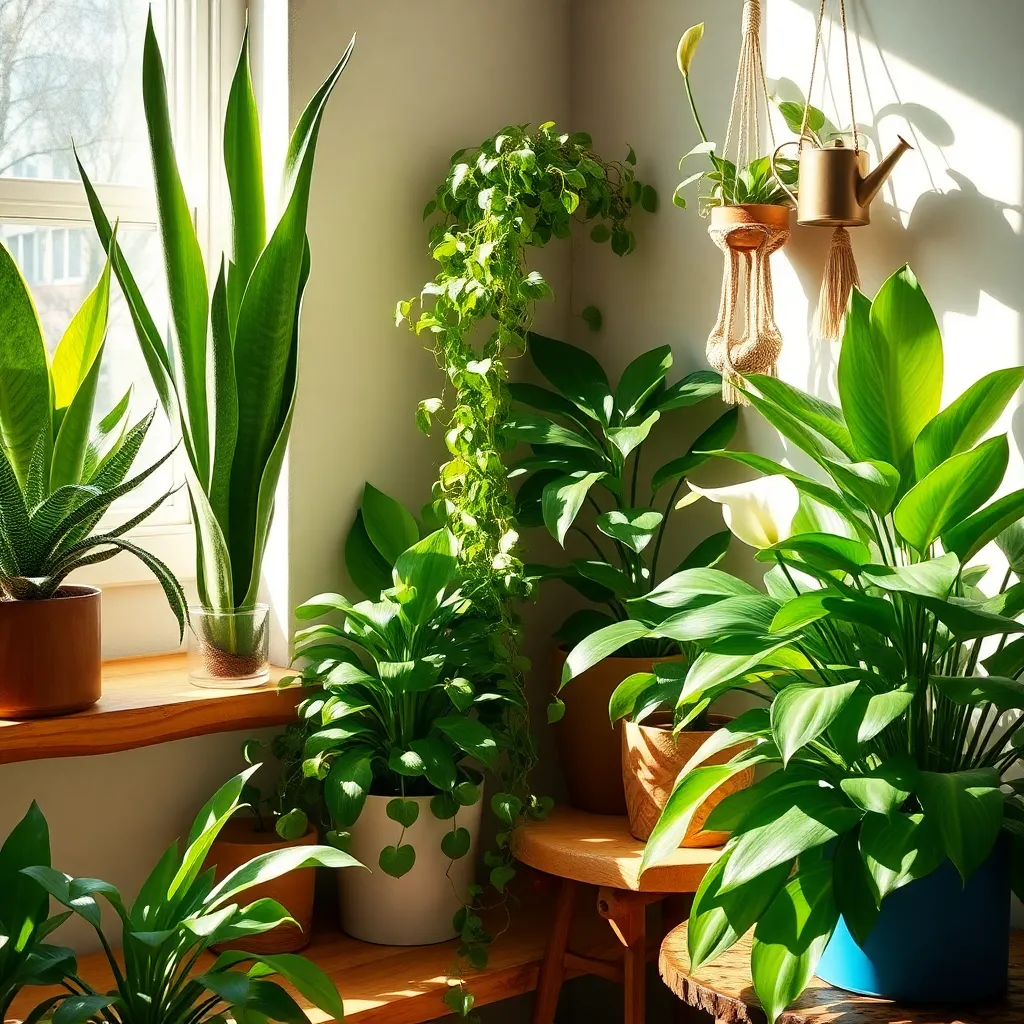
To maximize the air quality impact of your indoor plants, strategically place them in areas of your home where you spend the most time, such as living rooms or bedrooms. Grouping plants together can enhance their ability to purify the air by creating a small, concentrated area of clean air.
Choose a variety of plants that target different pollutants to ensure a broad spectrum of air purification. For example, snake plants and peace lilies are known for removing formaldehyde, while spider plants excel at filtering xylene and toluene.
Ensure your plants are healthy to maintain their air-cleaning efficiency, which means providing them with the right soil and watering conditions. Most air-purifying plants thrive in well-draining soil; a general-purpose potting mix with added perlite or sand can improve drainage.
Watering frequency will vary based on plant type, but a safe starting point is to water when the top inch of soil feels dry to the touch. Overwatering can lead to root rot, which diminishes a plant’s ability to filter air, so ensure pots have proper drainage holes.
Conclusion: Growing Success with These Plants
In exploring the intersection of nature and relationships, we’ve unearthed five key concepts that enrich our connection with both. Firstly, nurturing living things, like plants, mirrors the patience and care vital in relationships. Secondly, creating a healthier environment with air-purifying plants parallels fostering a positive emotional climate. Thirdly, the diversity of plants reflects the beauty of embracing differences in relationships. Fourth, growth in plants reminds us of the importance of personal and relational growth, and finally, the commitment to plant care reinforces the need for consistent effort in relationships.
To transform these insights into action, start today by bringing a plant into your home as a symbol of your commitment to nurture your relationships. Let it remind you daily of the growth and care your bonds require.
Bookmark this article to revisit these concepts and refresh your approach to nurturing both your home environment and your relationships. As you weave these practices into your life, envision a future where your relationships flourish, grounded in care and understanding. Remember, every small step you take today lays the foundation for a thriving relational future. Your journey to deeper connections begins now.

